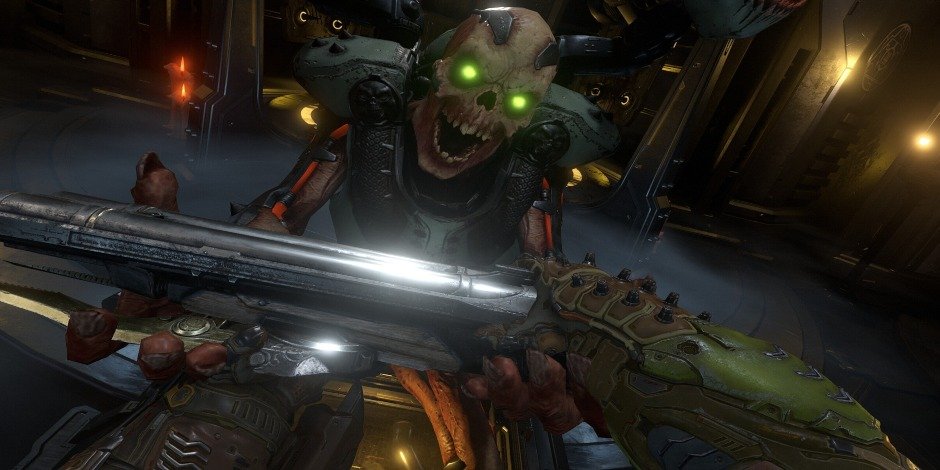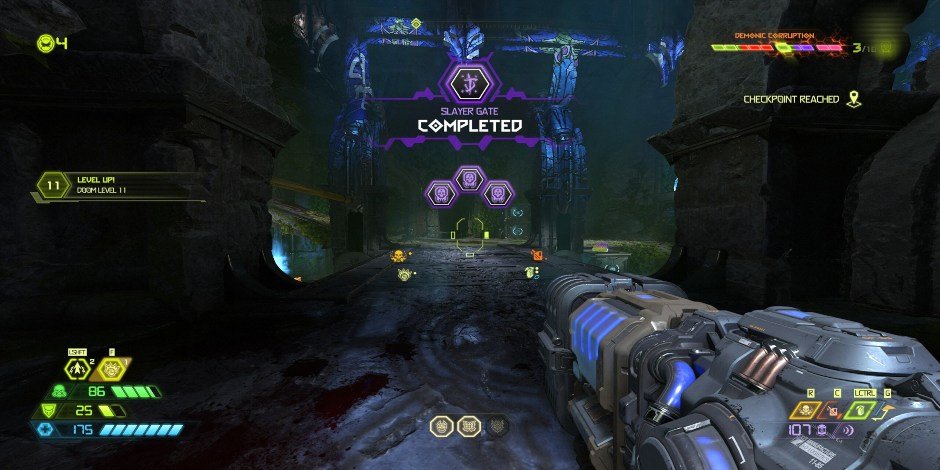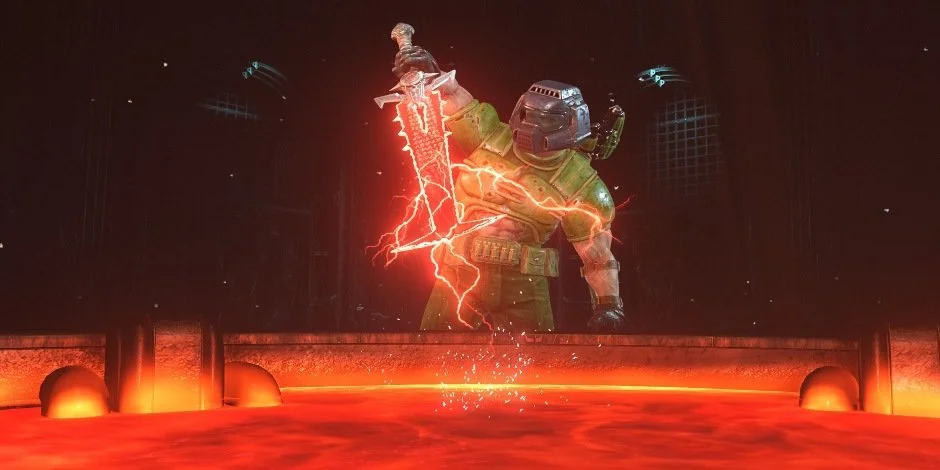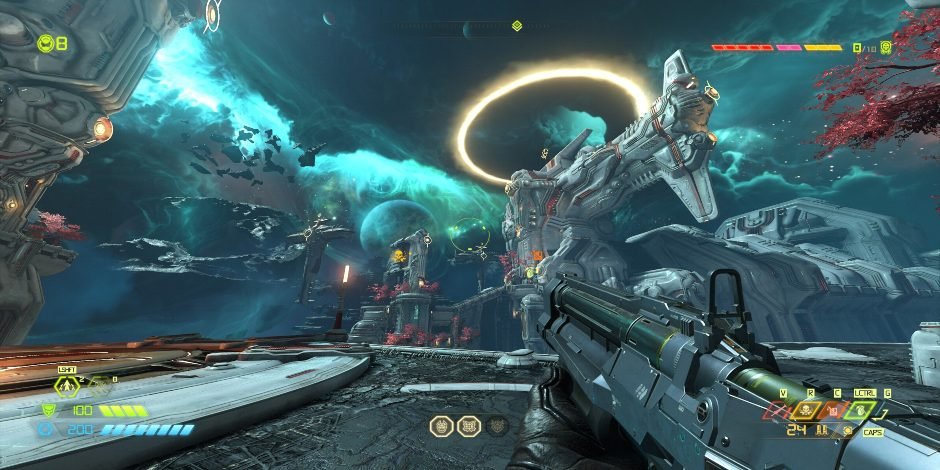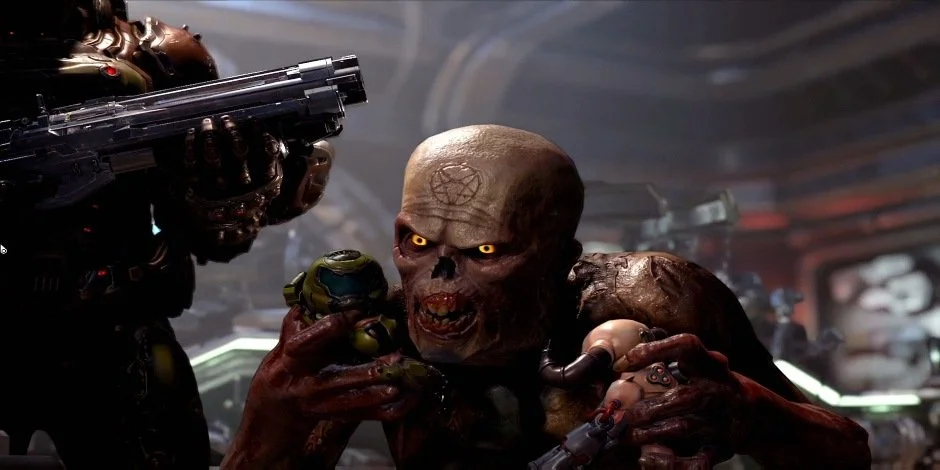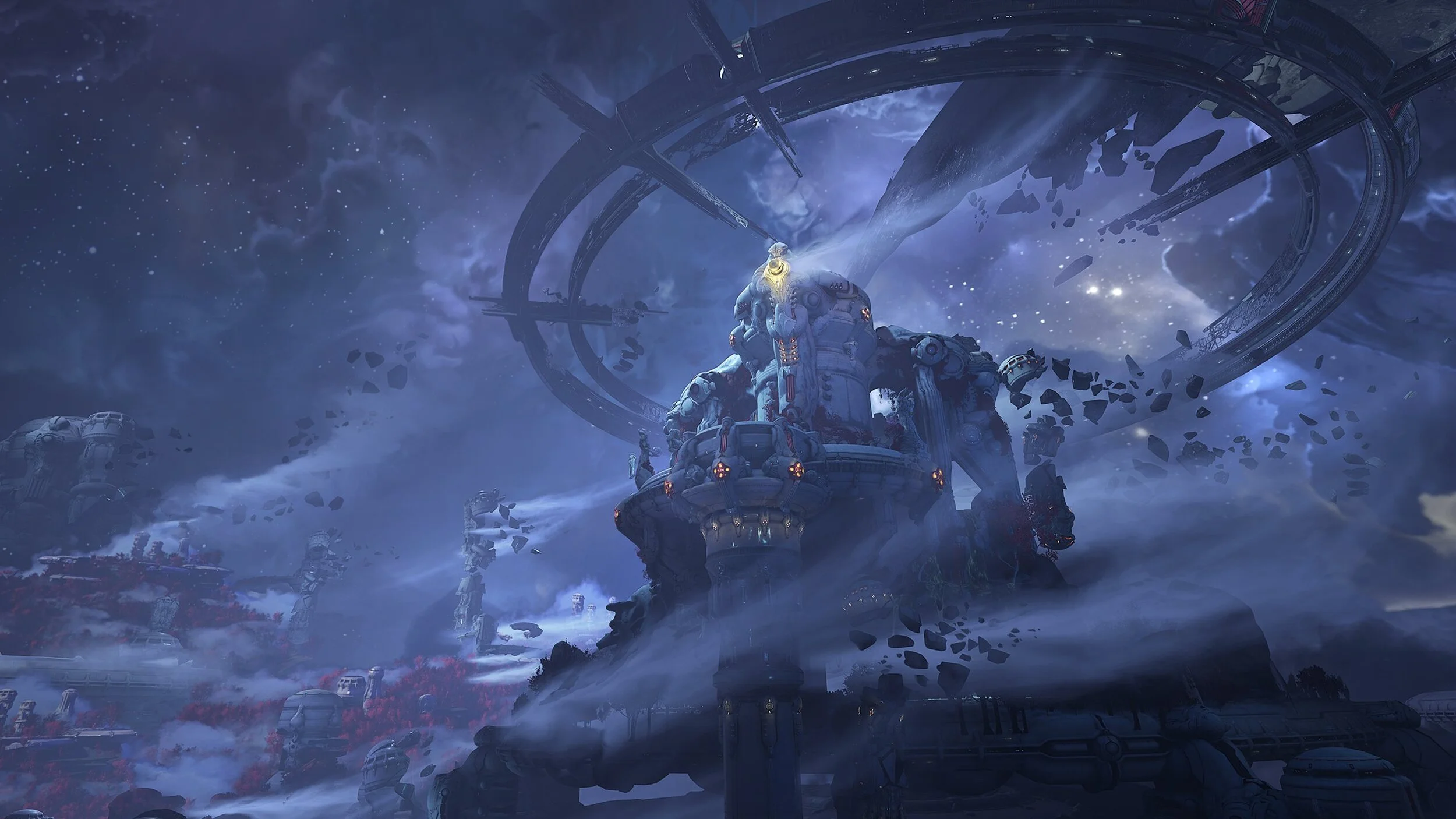The past few years have had me feeling burnt out on video games, especially the genres I loved. First-person shooters (FPS) have long been my bread and butter, but new releases in the genre felt lacking in their magic. Multiplayer modes usually brought me a great deal of joy, but even that wasn’t something included in many new games.
While multiplayer is fine, I grew up playing the single-player campaigns of these games: something that had been abandoned by most major titles in favor of multiplayer features. I picked up id Software’s DOOM a few years ago, and DOOM Eternal when it launched, but never played either for reasons unknown. Little did I know, those two titles would completely revive my desire to play newer games!
While I don’t plan to get too heavy into story-related spoiler territory, I will be discussing some of the later game elements and boss fights. You’ve been warned!
I think most people who play games are aware of id Software’s DOOM series, especially what the studio accomplished with the release of DOOM (2016) and Doom Eternal. While the DNA tracks back to the 1993 DOOM, the series brought new life to FPS games through an interesting story, frantic gameplay, and a thorough challenge.
The game truly just understands how to keep the player intimately engaged with what’s happening, and it hooked me. Playing through these games was the first time that I can remember staying up into the wee hours of the morning knowing full well I had to get up early the next day. It felt as though id Software truly understood what I, the player, wanted.
With the gameplay loop of the 2016 release, id Software honed in on what made the FPS games of the 1990s so special while also including a modern spin. You’re a nameless, superpowered space marine battling through enemy hordes, and, to put it lightly, you feel like a tank! The moment the now-infamous soundtrack by Mick Gordon kicks in as you’re ripping and tearing through the armies of Hell feels awesome. It’s an adrenaline rush with few comparable moments in gaming and something I still think of frequently. Moments like those still put a smile on my face every time I think about them.
There’s one moment in particular that made DOOM such a standout game, and that was the moment that you get the BFG-9000. Remember how I said that the game truly understood what I wanted? The BFG is what I meant by that. After getting the weapon, you’re put into a room full of zombie-like creatures called The Possessed and provided with one, simple objective: to let loose. I couldn’t stop smiling as I turned every enemy in that room into red mist. It sounds so simple, but sometimes simplicity is exactly what you need.
The game was also replete with challenges that were sincerely difficult, but not so much that they weren’t fun. Rune trials tested me as a player but were rewarding as they made certain aspects of the gameplay flow much smoother. Fighting multiple Hell Knights seemed excessive at first, but the reward for besting them was worth every frustrating shoulder charge and near-death experience. The boss fights brought a similar feeling of challenge, but their scope made them stand out. The Cyberdemon, Hell Guards, and Olivia Pierce all brought a sense of scale that made you feel like the ultimate being when you won.
While I adored DOOM, what I encountered with DOOM Eternal was unlike anything I remember playing in the last decade, possibly longer. It took everything that I loved about DOOM and made it better. The first game’s sense of scale was translated into remarkable level design, making the fight against Hell seem much more immediate than before.
In one of the game’s earliest moments, you find yourself on Earth as demons have eradicated a majority of human life on the planet. As you fight your way through destroyed buildings and wanton carnage, you can see gargantuan Titans walk across the land. This moment felt unique among FPS campaigns in general, but even more so when compared to modern entries in the genre.
Some of the most exciting activities in Doom Eternal are the Slayer Gates, which are optional challenges, that, for a player like me, were absolutely essential. Slayer Gates tested my ability to play, how quickly I could learn an arena, and how accurate I could shoot. While the first instance isn’t incredibly difficult, the final Slayer Gate presents a wildly difficult challenge.
Inside the rather small arena, the game throws the usual fodder of imps and gargoyles your way before adding some of the most difficult enemies in the game. As I was fighting my way through two Barons of Hell, four Hell Knights, and a Maykr Drone, I suddenly heard a dog barking. That’s when I realized they’d added a Marauder to the fight! Getting through this while only losing a single life to my own rocket launcher’s splash damage was easily in the top five most rewarding gaming victories I’ve ever had.
My reward for beating all six Slayer Gates was the Unmaykr, a wildly powerful weapon I was so excited to use. I knew it was going to be awesome the second it popped up in the same weapon slot as the BFG-9000, and I couldn’t have been more right! Not long after unlocking the gun, I passed the proverbial point of no return when the game pitted me against a Cyberdemon, or as they’re called in DOOM Eternal, a Tyrant.
So I pulled out the Unmakyr, fired 24 shots, and the fight was done. I had barely even registered what I was fighting before it was over! That’s the kind of reward that so many FPS games, and to a certain extent, games in general, are missing. Sure, experience points are great, but sometimes I just want to shoot things with a massive gun, something that both DOOM and DOOM Eternal deliver in spades.
Similar to DOOM’s introduction scenario for the BFG-9000, DOOM Eternal does this for the Crucible. The Crucible is a massively powerful sword that can kill nearly every enemy in the game with one hit, from the Zombies up to the Tyrants. When you first get the sword, you are dropped into an arena with tons of ammo (you can store three charges for the Crucible, similar to the chainsaw) and a big ol’ serving of enemies.
Where the BFG-9000 sequence in DOOM focused on a single moment that was ended quickly, DOOM Eternal truly lets you unleash the full power of your new weapon. The final fight of the game against the Icon of Sin also delivers an intense fight with unlimited ammo for the Crucible, providing you with another opportunity to play with this intensely powerful weapon.
With the final two boss fights of the game, the player is tested on everything they’ve learned throughout the game. The Slayer Gates felt like preparatory classes for the fight against the Khan Maykr and the Icon of Sin. The former comes with six health bars, requiring the player to survive waves of Drone Maykrs and environmental hazards while whittling away at the Khan Maykr’s health bar. Once she’s vulnerable, you can then use the meathook of the super shotgun to pull yourself up to her and knock off a chunk of health with the hyper-powerful Blood Punch melee attack.
It’s an incredible fight that is somehow eclipsed by the battle against the Icon of Sin. While atop a skyscraper, you have to knock off the Icon of Sin’s eight armor pieces while dealing with a constant wave of enemies. On the plus side, the arena is littered with unlimited ammo pickups for the Crucible. Once I’d defeated the Icon of Sin, I watched the credits roll and I knew I had just finished what may very well be one of the best FPS games ever made.
In the process of writing this piece, I received an email congratulating me on beating DOOM Eternal. It was a nice touch from the developers and one that I’d never seen before. Sure, you receive congratulations at the end of the game, and even though this is 100% for sure an automated email, it still brought a smile to my face. DOOM and DOOM Eternal are no joke as far as games go, and they’re high points for both the FPS genre and gaming as a whole. I may have been burned out on video games for the past few years, but these two titles brought gaming back to me in a profound way. And for that, I say thank you, DOOM.

